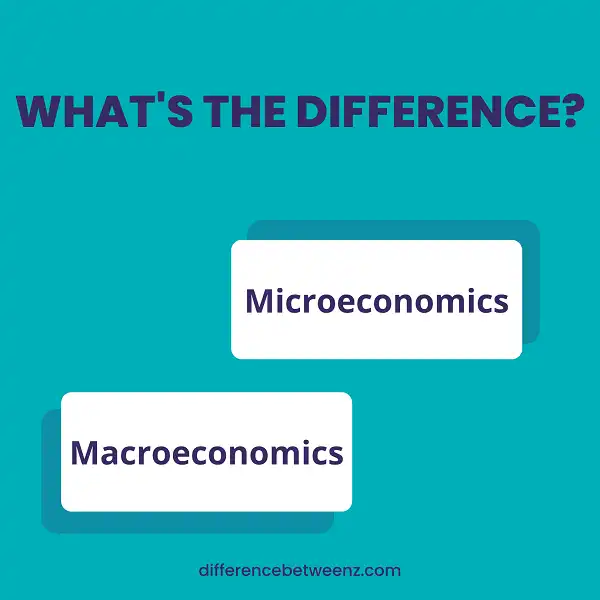Microeconomics and macroeconomics are two very different aspects of economics. Microeconomics is the study of how people use and exchange goods and services to satisfy their needs and wants. Macroeconomics, on the other hand, is the study of an economy as a whole. It looks at things like unemployment, inflation, and GDP. In this post, we’ll take a closer look at what each one entails.
What is Microeconomic?
Microeconomic is the study of how people use scarce resources to satisfy their unlimited wants. It focuses on the behavior of individual consumers and firms in making decisions regarding the allocation of resources. Microeconomics generally covers topics such as market demand and supply, consumer behavior, production and pricing decisions by firms, and factor markets. Microeconomics is a branch of economics that drives many real-world decision-making processes. Understanding microeconomic principles can help individuals make more informed choices about personal financial decisions, as well as voting and other economic policy choices.
What is Macroeconomic?
Macroeconomic is a branch of economics that deals with the overall functioning of the economy. It looks at economic indicators such as gross domestic product (GDP), inflation, and unemployment. Macroeconomic also covers topics such as economic growth, trade policy, and monetary policy. Macroeconomic theory focuses on how the aggregate economy behaves. It attempts to explain how the economy works and why it produces the results it does. Macroeconomics also looks at the interrelation between different sectors of the economy, such as the housing market, the stock market, and the labour market.
Difference between Microeconomics and Macroeconomics
Microeconomics and macroeconomics are two separate fields of study that examine different aspects of the economy. Microeconomics focuses on individual entities, such as consumers and businesses, and how they make decisions regarding resource allocation. Macroeconomics, on the other hand, looks at the economy as a whole and examines issues such as inflation, unemployment, and economic growth. Both microeconomics and macroeconomics are important for understanding how the economy works, but they approach the subject from different perspectives. Microeconomics is typically studied at the introductory level, while macroeconomics is usually studied at the advanced level. Microeconomics is also generally more focused on theoretical concepts, while macroeconomics is more applications-oriented. However, both microeconomics and macroeconomics are essential for a complete understanding of the economy.
Conclusion
Microeconomics and macroeconomics are two different schools of economic thought that have different focuses. The main difference between the two is that microeconomics looks at how individuals and businesses make decisions, while macroeconomics looks at the economy as a whole. Both perspectives are important for understanding economics, and each has its own strengths.


